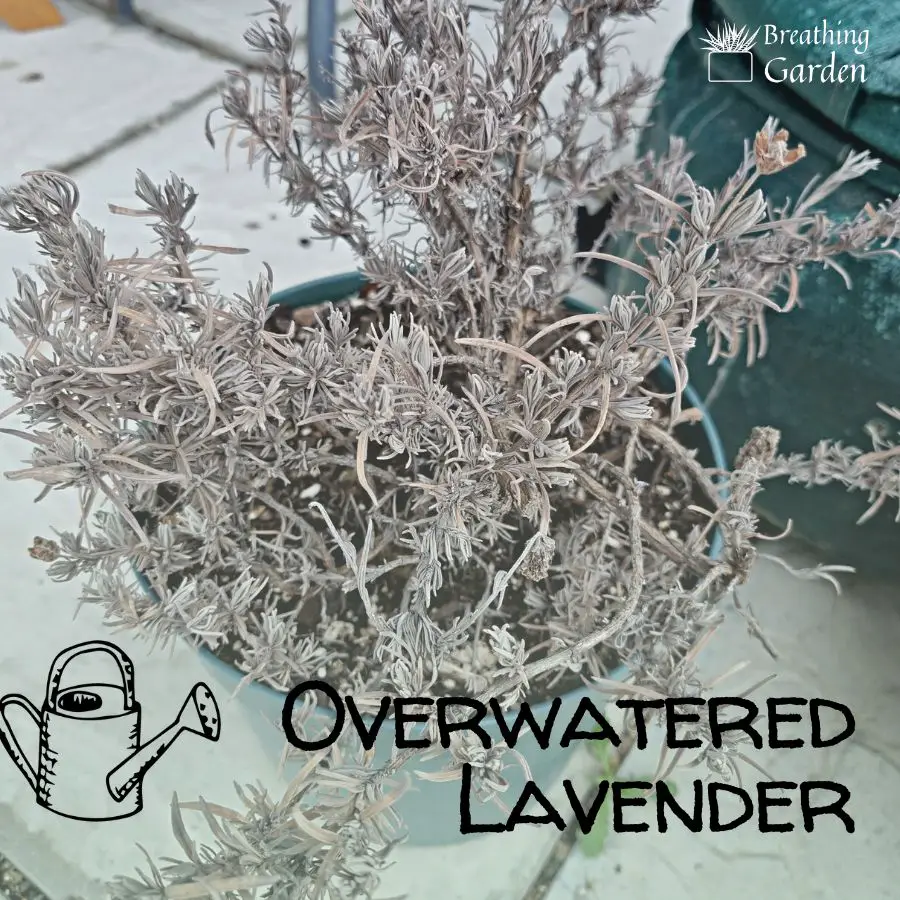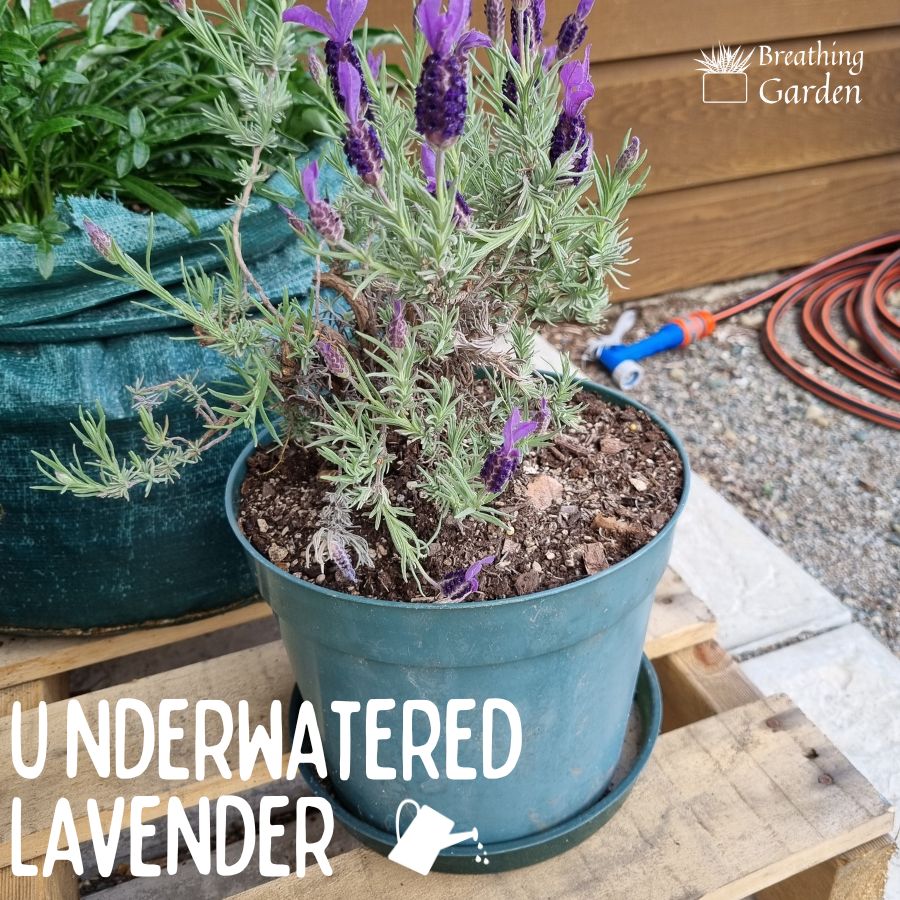
Lavender is an easy-to-care-for perennial herb with a pleasant aroma and a range of uses. However, if it is overwatered, it can become unhealthy and begin to show signs of distress. Overwatered lavender typically looks wilted, has yellowing or browning leaves, and can curl up and die if not addressed quickly. Furthermore, its roots can become waterlogged, which can lead to root rot and other fungal infections. To keep your lavender healthy, check the soil moisture and water only when the soil is dry.
What is Lavender?
Lavender is a fragrant, flowering plant that has been used for centuries for its soothing and calming effects. It is a member of the mint family and is native to the Mediterranean. The flower and the oil from its leaves have been used in aromatherapy, cosmetics, and cooking for centuries. Lavender is known for its calming, calming, and anti-inflammatory properties. It is often used in teas and baths for relaxation and to reduce stress. The scent of lavender is also thought to reduce anxiety and improve sleep. Lavender can also be used as a natural insect repellent and is often used in potpourri and sachets.
Signs of Overwatering in Lavender
Lavender is a beautiful and fragrant herb that’s been used for centuries to scent everything from perfumes to potpourri. Unfortunately, it’s all too easy to overwater lavender plants, resulting in a number of telltale signs that something is amiss. Overwatering can cause the leaves of the plant to become yellow and wilted, which can lead to drooping branches and stunted growth. The soil can also become waterlogged, resulting in root rot or other fungal problems. To avoid these issues, it’s important to make sure that you’re watering lavender only when the soil is dry and providing the right amount of sunlight and drainage. By keeping an eye out for signs of overwatering, you can ensure your lavender stays healthy and vibrant.
Causes of Overwatering in Lavender
Overwatering is one of the most common causes of problems with lavender plants. When the soil is too wet, it can cause the roots to rot and the plant to decline. For optimal health, lavender needs well-draining soil and regular watering. Avoid overwatering your lavender by making sure the soil is dry before each watering. You can also check the soil moisture with a moisture meter to ensure the right amount of water is being applied. If your lavender plant starts to show signs of overwatering, such as yellowing leaves and wilting, take action to correct the problem as soon as possible. Amend the soil with organic matter, reduce watering, and provide plenty of air circulation to help the plant recover. With the right care, lavender can thrive and provide you with a beautiful and fragrant addition to your garden.

How to Avoid Overwatering in Lavender
Lavender is an aromatic flowering plant that is beloved for its beauty and calming scent. However, when it comes to watering, lavender is a little tricky. Too much water can lead to root rot and other diseases, while too little can cause the plant to dry out. To prevent overwatering, it is important to understand the proper watering technique for lavender. Start by assessing the soil moisture. If it’s still damp, wait until it has dried out a bit before watering again. Additionally, water the lavender at the base of the plant and not from the top. Finally, always check the drainage of the soil to ensure that the water isn’t pooling. With these simple tips, you can keep your lavender healthy and beautiful without overwatering.
How to Spot and Address Overwatering in Lavender
Lavender is a beautiful, fragrant, and versatile plant that can be grown both indoors and outdoors with relative ease. Unfortunately, overwatering can be a huge problem for lavender plants. Too much water can cause root rot, which can lead to a weakened plant and an overall lack of growth. To ensure the health and longevity of your lavender, it’s important to spot the signs of overwatering and address them promptly. Firstly, inspect the leaves of your lavender plants for signs of wilting or yellowing. Additionally, lavender plants that are overwatered often have visibly moist soil, as well as a distinct smell of mold or mildew. To address the issue, reduce the amount of water you administer to the plant, and make sure it is draining properly. Additionally, be sure to check the soil for dryness before applying more water. With these steps, you can be sure to keep your lavender plants healthy and thriving.
How to Revive Overwatered Lavender
If you’ve overwatered your lavender and it looks like it’s on its last leg, don’t worry! There is still hope! With a few simple steps, you can revive your beloved lavender and get it back to its former glory. Firstly, it’s important to stop watering the plant immediately. Secondly, you need to let the soil dry out completely. Move the lavender to a well-lit spot and make sure it is in a pot with good drainage. Once the soil is dry, start watering the plant again, but only when the top of the soil is dry. Finally, fertilize your lavender to give it a little extra boost of nutrients. With these simple steps, you can revive your overwatered lavender and get it back to its fragrant and beautiful best.
FAQs About the What Does Overwatered Lavender Look Like
1. What are the signs of overwatered lavender?
Yellowing or browning of leaves, wilting, and mushy stems are all signs of overwatered lavender.
2. How can I tell if my lavender is getting too much water?
If your lavender is showing any of the signs of overwatering, such as yellowing or browning of leaves, wilting, or mushy stems, then it is likely getting too much water.
3. What should I do if my lavender is overwatered?
If your lavender is overwatered, it is important to reduce the amount of water it is receiving and allow the soil to dry out. You may also need to repot the plant in fresh soil.
Conclusion
Overall, overwatered lavender looks like wilted and yellowing leaves, stale-smelling flowers, and a lack of blooms. It is important to check the soil of your lavender plants regularly and adjust the watering schedule accordingly to prevent overwatering. By providing the proper amount of water and nutrients, you can ensure that your lavender plants stay healthy and vibrant.







